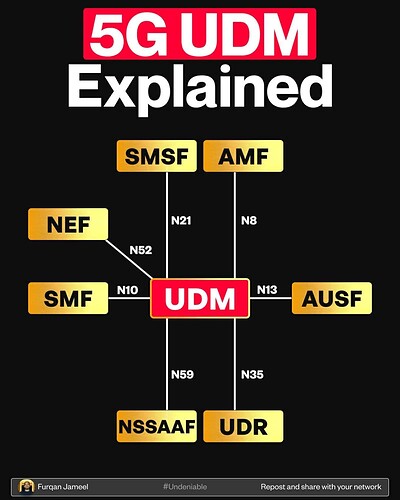We always chase faster 5G speeds.
But speed means nothing without structure.
That’s where UDM comes in.
It’s not flashy.
But it quietly powers everything.
Think of UDM as the identity brain of the 5G core.
It keeps track of who you are, where you are, and what you’re allowed to do.
Without it, your phone wouldn’t even know how to connect.
Here’s how UDM fits in:
![]() AMF checks where you are (N8).
AMF checks where you are (N8).
![]() AUSF verifies if you’re legit (N13).
AUSF verifies if you’re legit (N13).
![]() UDR stores your profile (N35).
UDR stores your profile (N35).
![]() NSSAAF makes sure you’re using the right slice (N59).
NSSAAF makes sure you’re using the right slice (N59).
![]() SMF manages your session (N10).
SMF manages your session (N10).
![]() NEF connects with external apps (N52).
NEF connects with external apps (N52).
![]() SMSF handles your texts (N21).
SMSF handles your texts (N21).
Each one talks to UDM.
Each one depends on it.
Without UDM, there’s no authentication.
No sessions.
No service.
It’s the glue that keeps the 5G core together.
But here’s the twist—
The more 5G grows, the more pressure UDM takes on.
More users.
More slices.
More complexity.
Yet it handles it all behind the scenes.
Quiet, stable, essential.
We talk a lot about the edge, the cloud, and speeds.
But none of that works unless UDM does.
5G UDM isn’t just a backend box.
It’s the reason 5G knows who you are.
Thanks for reading.
LinkedIn: ![]()
